Bonhams Presents Highlights for May Chinese Art Sales in London
Lot 40. A magnificent gilt-bronze figure of Shakyamuni Buddha, Yongle six-character mark and of the period (1403-1424); 21cm high. Estimate £300,000 - £500,000. Sold for £806,700. © Bonhams 2001-2023
LONDON - Bonhams is delighted to present the Fine Chinese Art sale, which will be held at New Bond Street, London on 18th May. The sale will offer an exceptional selection of Chinese jades, furniture, Imperial porcelain, Buddhist bronze figures, metalworks, paintings, lacquerware, cloisonné, Court textiles and works of art from important collections in the UK and Europe.
Leading the sale is a magnificent Imperial gilt-bronze figure of Shakyamuni Buddha, Yongle six-character mark and of the period (1403-1424), estimated at £300,000-500,000 (Lot 40). From the collection of Henrik Valdemar Jacobsen (1887-1955), Harbin, China and Hellerup, Denmark, and thence by descent, the remarkable figure is exceptionally rare and only five other Yongle mark and period figures of Buddha of similar size are known to exist. It embodies the zenith of Chinese Imperial Buddhist sculpture in the early Ming Dynasty and the strong relationship between the Court in Beijing and the Hierarchs in Tibet.
Lot 40. A magnificent gilt-bronze figure of Shakyamuni Buddha, Yongle six-character mark and of the period (1403-1424); 21cm high. Estimate £300,000 - £500,000. Sold for £806,700. © Bonhams 2001-2023
Superbly cast seated in dhyanasan with hands in bhumisparsa and dhyana mudras, wearing a simple dhoti leaving the right shoulder bare and cascading into elegant folds before the incised six-character mark reading 'Da Ming Yongle nian shi', the face with crisp features and contemplative expression, flanked by large ears with pendant pierced lobes, the hair tightly coiled and piled onto the high usnisa, resting on a double-lotus pedestal, liberally gilded overall, the base sealed and decorated with a double vajra.
Provenance: Henrik Valdemar Jacobsen (1887-1955), Harbin, China and Hellerup, Denmark, and thence by descent.
Note: Henrik Valdemar Jacobsen served as the Consul of Denmark in Harbin, China 1919-1930. He was in Harbin in 1911 with the Danish East Asiatic Company (宝隆洋行), and was then appointed its manager, North East China, from 1917-1930, developing the company's trade in soy beans. On his return to Copenhagen, Denmark, he served as Managing Director from 1932-1952.
This important gilt-bronze figure of Buddha, Yongle mark and period, was collected by Jacobsen during his work in China, amongst other objects which adorned his family home in Harbin and later in Hellerup, Denmark as can be seen in an old family photograph.
The present magnificent gilt-bronze figure of Shakyamuni Buddha is amongst the very finest ever made during the Yongle period. For nearly a century it has remained with the same Danish family, and it is offered here for the first time since it left China prior to 1932.
Emperors during the early Ming dynasty lavishly patronised Buddhism. The Hongwu emperor was a monk between the ages of about seventeen and twenty-four, and the Yongle and Xuande emperors continued to promote Tibetan Buddhism, also as means of extending their power and sphere of influence. The Yongle emperor welcomed Tibetan guests with great ceremony and gifts, and sent Imperial delegations to Tibet as early as 1403. In doing so he was recalling Kublai Khan's famous patron-priest relationship with his Tibetan Imperial Preceptor ʼPhags-pa (1235-1280), casting himself in the role of the Mongol Khan's spiritual heir and inheritor of Mongol political hegemony. Artisans from Tibet are believed to have remained in Beijing after the fall of the Yuan dynasty and continued to serve in the Ming Imperial Workshops, with frequent exchanges of sculptures and gifts between the Ming Court and Tibetan hierarchs and monasteries.
Strong influence was exerted by the monk Daoyan (Yao Guangxiao) (1335-1418), who met Prince Yan, the future Yongle emperor, at the funeral of his mother the empress in Nanjing, and then travelled with him to his fiefdom in Beijing. Later he became a key military, political and religious adviser to the future Yongle emperor. Daoyan's influence continued in assisting Prince Yan to capture the throne from the Jianwen emperor in 1402. Therefore, the receipt of favourable omens and portents from Tibetan lamas and their blessings, served to strengthen the legitimacy of the Ming rule and its Mandate from Heaven, and particularly that of the Yongle emperor.
The genius of Yongle period Buddhist sculpture is its ability to codify Imperial power, artistic creativity and religious authority within a single work of art. In the present lot these three elements exist on a scale that is both personal and intimate.
The iconographic form of Shakyamuni Buddha represented here is rare among the corpus of surviving Yongle sculpture. Monumental examples include a complete shrine in the collection of the British Museum, published by W.Zwalf, ed., Buddhism: Art and Faith, London, 1985, no.305, (59cm) and another from the Speelman collection, which was sold at Sotheby's Hong Kong, 7 October 2006, lot 808 (72.5cm). Such works were part of a large-scale project of monastic patronage by the Yongle emperor, which included the construction, between 1412 and 1418, of the gilt bronze Golden Hall in the Palace of Supreme Harmony on Mount Wudang. The present example represents the historical Shakyamuni Buddha and commemorates the defeat of Mara at Bodhgaya, one of the 'Eight Great Places' of Buddhist pilgrimage.
A small number of more intimately conceived pieces, range between approximately 15 and 28cm in height, perfectly encapsulating the essence of the monumental works. Every naturalistic detail has been painstakingly cast from the drape of the cloth to the poise of the fingers, the quintessential broad shoulders, powerful torsos, long legs and curly hair gathered in a pointed topknot.
Recorded examples of similar-sized gilt bronze figures of Shakyamuni Buddha, Yongle mark and period are exceptionally rare and include the following: the first, published by U.von Schroeder, Buddhist Sculptures in Tibet, Hong Kong, 2001, vol.II, pl.358A, (19.4cm); the second is illustrated by U.von Schroeder, Indo-Tibetan Bronzes, Hong Kong, 1981, pl.146D (19cm) and was sold by Christie's London, 6 May 1975, lot 32; the third figure was sold by Christie's New York, 21 March 2001, lot 85 (19.7cm high); the fourth figure from the collection of Tuyet Nguyet and Stephen Markbreiter, was sold at Sotheby's Hong Kong, 7 October 2010, lot 2142 (21.2cm high); and the fifth and most recent example, is a figure of Shakyamuni Buddha, which was sold at Sotheby's Hong Kong on 3 October 2017, lot 3143 (20.2cm high). For another very similar example but with slightly different lotus lappets, in the Palace Museum, Beijing, see Splendors from The Yongle and Xuande Reigns of China's Ming Dynasty: Selected Artefacts, Beijing, 2010, p.244, no.118 (22cm high).
Also on offer is a very large and extremely rare Imperial Court painting of the Bannerman Te'er Deng Che, dated by inscription to 1788 and of the period, from an English private collection, estimated at £200,000-300,000 (Lot 128). It is one of only six known from the second series of portraits of bannermen commissioned by the Qianlong Emperor further to the Taiwan Campaign of 1786-1788 and is a fine example incorporating Western shading techniques introduced by Jesuit artists in the eighteenth century.
Lot 128. A rare and important Imperial Court painting of the Bannerman Te'er Deng Che, Qianlong, dated by inscription to the Wushen year, corresponding to 1788 and of the period. Ink and colours on silk, the painting, 186cm high x 96cm wide. Estimate £200,000 - £300,000. Sold for £781,500. © Bonhams 2001-2023
depicting a bannerman facing directly the viewer with finely painted whiskers, donning a fur-lined hat surmounted by a coral bead and a peacock feather with a single-eyed plume (dan yan hua ling), dressed in a grey surcoat with foliate roundels, green colour and tunic, wearing a pair of black silk boots with white soles, his right hand drawing his sword, his left hand holding the shagreen scabbard, eulogised with several lines of text above, the right side with Chinese in kaishu calligraphy and in Manchu on the left, with one seal of the Qianlong emperor between, reading Qianlong Yulan Zhibao, mounted on board.
Provenance: an English private collection; according to the owner, the painting was gifted to the owner's late husband circa 1970s.
Note: The inscription in Manchu reads:
meiren i janggin i jergi uheri da bihe
xukdan baturu teldence
daci solon i dorgi gabtara manggangge da tolome goirakvngge akv, dabkime morin noilhumbume faida be birehe de dardai andande efulerakvungge akv, ehe hvlha be sihame fargara de etuhun hvsun i fafurxame funturxehe de dasame arbun nirubufi, erei faxxaha be saixame iletulehe
abkai fehiyehe xufayan bonio aniya juwari ujui biyade han i arahangge
The inscription in Chinese reads:
原副都統銜總
管舒克丹巴圖
魯特爾登徹
索倫勁手箭無虛
發躍馬突陣縱横
倏忽視力窮追猛
氣咆勃再炳丹青
用旌偉伐
乾隆戊申孟夏
御題
Which may be translated as:
Former Lieutenant-general, Commandant [and] Xukdan Baturu [Manchu term for national hero], Teldence
Originally from the Solon [people], he is an expert at archery and who does not miss [literally: counting his hits, he has no misses]. When whipping his horse, making it gallop, and rushing to attack the formation, there is nothing he does not destroy. When hot on the pursuit of the evil bandits, he vigorously rooted them out. Having [ordered] to paint [his] image, through this moreover, I commend him and make obvious his effort.
Written by the Emperor Qianlong in the early Summer of the Wushen year (1788)
Bannermen were the Qing dynasty's military elite administered into divisions known as the Eight Banners. Apart from being soldiers, the banner system was also the basic organisational framework of all Manchu society and included various groups including Manchus, Mongols and Han Chinese. The Solon people, mentioned in the present inscription, are a subgroup of the Evenki people of north-eastern Asia. The Solon were ordered by the Qianlong Emperor to stop using rifles and instead practice traditional archery, issuing an edict for silver taels to be issued for guns to be turned over to the government. It is not surprising therefore, that the Emperor praises Teldence's archery skills in particular.
The eulogy of the present lot describes the bannerman Teldence (Chinese name Te'er Dengche), as a heroic and brave warrior and praises his relentless pursuit of the rebels. This portrait, and those of other officers in this series of Bannerman paintings, was commissioned by the Qianlong Emperor as part of two series of portraits after the triumphant campaign in Taiwan against Ming-loyalist rebels in the years 1787 to 1788. Teldence's rank and excellence in the battlefield is unmistakable in the single-eyed peacock feather that hangs prominently from the back of his black fur-trimmed winter hat, an Imperial gift bestowed only to officers who had distinguished themselves in a military campaign.
In 1786 a rebellion arose out of central Taiwan in the village of Daliyi, led by the Ming loyalist Lin Shuangwen. The brutality of the Qing army against the local populace sparked an uprising on 16th January 1787, and Lin organised an army that quickly seized Taichung, Hsinchu and Chunghwa, which was established as their capital. He assumed the title 'King of the Ming' and extended his territory to Fengshan, but was unable to gain control of the capital city, Tainan. The rebels were able to defend their holdings despite Qing reinforcements from the mainland until Lin Cou, one of Lin Shuangwen's generals, defected to the Qing. On 10th February 1788, after ruling central Taiwan for over a year, Ling Shuangwen was captured and later executed, marking the end of the campaign.
This portrait, painting number 5 in the second set of portraits, was produced in 1788. The yuan 原 ('former') character in the inscription implies that Teldence had died by the time the portrait was painted, either during the campaign or after. Such Imperial bannerman paintings were housed in the Ziguange (Hall of Purple Splendour), a hall of fame for Immortal heroes, located in the West Garden of the Imperial Palace Precincts in Beijing. During the Qianlong Emperor's reign in total 280 compositions of bannermen portrait paintings were made which were hung in the Ziguang Pavilion. Following Qianlong's example, later emperors continued adding new portraits to the collection in the Ziguang Pavilion. During the reign of the Qianlong emperor the building was also used to display battle wall charts and seized weapons and was also known as the 'Hall of Barbarian Tributes'. The Qianlong emperor often held banquets and received foreigners there; to impress on foreign guests the Qing empire's formidable military power. See C.Ho and B.Bronson, Splendors of China's Forbidden City: the Glorious Reign of Emperor Qianlong, Chicago, 2004, p.118.
The present lot embodies the Imperial academy workshop style of the eighteenth century, which combined traditional Chinese portrait painting with Western painting techniques introduced by Jesuit missionary artists at Court such as Giuseppe Castiglione (1688-1766), Ignace Sichelbart (1708-1780) and Jean-Denis Attiret (1702-1768). However, the second set of portraits, which includes the present lot, would have most likely been painted by Chinese artists well schooled in the Jesuit manner of painting and European shading.
Dressed in a grey surcoat and green-coloured riding chaps, the folds and vivid blocks of colour of the clothing are carefully outlined in black ink which is typical of the Chinese style of painting. The roundels with foliate scrolls are especially well painted. He assumes a pose ready to pull his sword from the sheath, while gazing at the viewer directly. In contrast, his face - painted by a different artist in the workshop - is rendered in a European-inspired style with layers of colour washes that model his features. These Western methods of painting were particularly favoured by the Qianlong emperor, who both perceived and utilised detailed, naturalistic painting as a means of propagating the magnificence of the Qing empire. Thus this style was particularly suited to such grand Bannerman paintings; see Emperor Chien-lung's Grand Cultural Enterprise, Taipei, 2002, p.126.
Only fifty portraits depicting bannermen from the Taiwan campaign were made, comprising of twenty from the first set and thirty from the second set. Five other portraits from the second series are known: no.3, Yuan Guohang, formerly in the Ethnological Museum of Berlin (acc.no.23144), but now possibly in Russia; no.8, Eldemboo, also formerly in Germany (acc.no.23145) and now possibly in Russia; no.13, Wan Ting, which was sold at Sotheby's Hong Kong, 8 October 2009, lot 1661; no.16, Yanjimbo in the Naprstek Museum, Prague (acc.no.34.505); and no.18, San Yinku, in the Ethnoloigcal Museum of Hamburg (acc.no.31-34-103). For further information on bannerman paintings see Nie Chongzheng, 'The Newly Discovered Bannerman Portrait Painting of Yisamu from Ziguang Pavilion', Sotheby's London, 8 October 2007, pp.112-113.
Compare also paintings of officers of the Eastern Turkestan campaign (Xinjiang, 1755-59) dated to 1760, illustrated in Between Heaven and Earth: Secular and Divine Figural Images in Chinese Paintings and Objects, London, 1988, pp.13-15.
The sale also includes a strong selection of jade carvings. Two distinguished private collections feature prominently in this category, with most objects dating from the Neolithic to the Ming dynasty and acquired from renowned London dealers such as Spink & Son, Bluett's & Sons, Roger Keverne Ltd., and Sydney Moss Ltd. A highlight from the first collection is a very rare jade 'buffalo' carving, late Shang Dynasty (12th/11th century BC), estimated at £50,000-80,000 (Lot 19), formerly in the renowned Mu Fei collection of Prof. Cheng Te-k'un, Cambridge. The Joseph (1938-2005) and Bella (1941-2011) Shapiro Collection (Lots 59-108) features a remarkable and large group of mostly jade animals including many examples formerly in the 'Dr Newton's Zoo' Collection of the Dr late Isaac Newton (d. circa 1982). The jade carvings date from the Neolithic to the Qing, with many superb examples of the Song to the Ming Dynasty.
Lot 19. A large and very rare jade 'buffalo' carving, late Shang Dynasty, 12th/11th century BC; 5.4cm high. Estimate £50,000-80,000. Sold for £94,800. © Bonhams 2001-2023
Thickly carved with a central aperture, each side incised with bovine taotie masks formed by a tapering nose underneath two slanted eyes and a pair of horns above a grooved channel, the stone of pale green tone with russet and milky-white inclusions.
Provenance: Prof. Cheng Te-k'un (1908-2001), Cambridge (the Mu-Fei collection)
Bluett & Sons Ltd., London
A British private collection.
Published, Illustrated and Exhibited: Bluett & Sons Ltd., Chinese Jades from the Mu-Fei Collection, London, 1990, no.16.
Note: Compare with a related archaic jade 'mask' bead, Shang dynasty, illustrated in the Compendium of Collections in the Palace Museum, Beijing, 2011, p.156, no.165. See also a related smaller jade bead carved with the head of an animal, Shang dynasty, illustrated by J.Rawson, Chinese Jade: from the Neolithic to the Qing, London, 1995, p.239, no.14:2, which was later sold at Sotheby's London, 8 December 2022, lot 156. Compare also a related jade Buffalo head, carved in the round, Shang dynasty, in the Harvard Art Museums (acc.no.1943.50.465), illustrated by M.Loehr and L.G.Fitzgerald Huber, Ancient Chinese Jades from the Grenville L. Winthrop Collection in the Fogg Art Museum, Harvard University, Cambridge, MA, 1975, p.127, no.155. See also a related jade bovine carved bead, Shang dynasty, in the Art Institute Chicago (acc.no.1950.272).
See also a related but smaller dark grey-green jade 'bovine' bead, late Shang dynasty, which was sold at Christie's London, 3 November 2020.
Also being offered is a distinguished European private collection of classical huanghuali furniture dating to the Ming and Qing dynasties, formed to the highest aesthetical and collecting standards. Examples from the collection were formerly sold by leading collections and dealers including Nicholas Grindley and Marcus Flacks. Highlights include an exceptionally rare huanghuali recessed-leg side table, jiuzhuo, 18th century, estimated at £150,000-200,000 (Lot 50), notable for its timeless outline and strong proportions which would have greatly appealed to the scholar-collector; a rare huanghuali 'official's hat' armchair, sichutou guanmaoyi, 17th century, estimated at £100,000-150,000 (Lot 46), is characterised by a highly sculptural form conveying dynamism and a restrained inner strength.
Lot 50. A rare huanghuali recessed-leg side table, jiuzhuo, 18th century; 98cm wide x 82cm high x 48.5cm deep. Estimate £150,000-200,000. Unsold. © Bonhams 2001-202
The table defined by a thick top framed on four sides and with beaded edges, set within single-panel flower-shaped aprons, supported on fluted legs featuring bridle joints, the stretchers similarly fluted.
Provenance: The Feng Wen Tang collection, Hong Kong
Christie's Hong Kong, 3 June 2015, lot 2849
An important European private collection, and thence by descent
Note: The present table is an exceptionally rare and elegant example of its type. Its clean timeless outline, resulting from its rectilinear members and strong proportions, provides a pleasing aesthetic effect which would have greatly appealed to the scholar-collector. In addition, the fluted legs supporting the flat top are features rarely encountered on huanghuali tables, as circular or square legs were normally used to support recessed-leg tables.
Wine tables were often used for dining, usually accommodating one or two individuals. However, they were also placed next to walls, supporting flower vases, incense burners and art objects. Their restrained form and graceful splay of the legs may be traceable to domestic furniture design of the Song dynasty. See for example the elegant couple seated at a very similar table as the present example, enjoying wine served in lotus-shaped cups, depicted on the wall of a Song dynasty tomb in Baisha, Henan Province, illustrated by Su Bai, 'Song dynasty tombs in Baisha'Baisha Song mu, Beijing, 1957. Furthermore, a woodblock print from the 'Rescue of Prostitute by Zhao Paner' Zhao Paner Fengyue Jiu Fengchen, a drama dating to the Ming dynasty, depicts the protagonist and his female companion also sitting beside a recessed-leg table laid with a wine pot and cups. See G.Wu Bruce, The Best of the Best. The MQJ Collection of Ming Furniture, Beijing, 2017, p.154.
A huanghuali recessed-leg table supported on similar fluted legs like the present example, 17th century, formerly in the collection of Robert Ellsworth, was sold at Christie's New York, 17 March 2015, lot 42. See also the pair of small huanghuali tables, 17th century, in the Chen Chite collection, illustrated in Splendors of Style: Classical Furniture from the Ming and Qing Dynasties, Beijing, 1999, pp.128-129.
Compare with a nearly identical huanghuali recessed-leg wine table, late Ming dynasty, illustrated by G.Wu Bruce, The Best of the Best. The MQJ Collection of Ming Furniture, Beijing, 2017, p.155. A similar slightly earlier huanghuali waistless-leg side table, banzhuo, 17th century, was sold at Christie's Hong Kong, 28 November 2012, lot 2003; a related huanghuali wine table, late 16th/early 17th century, was sold at Bonhams New York, 20 March 2013, lot 82.
Lot 46. A rare huanghuali 'official's hat' armchair, sichutou guanmaoyi, 17th century; 110.5cm high x 57cm deep. Estimate £100,000-150,000. Unsold. © Bonhams 2001-2023
Gracefully proportioned with a solidly carved toprail, the shaped yoke and upswept flat ends supported on corner posts continuing through to the back legs, and flanking a thick s-shaped rectangular back splat, the elongated serpentine arms supported by curved stiles and posts, the hard-mat seat above the round-section front legs joined by continuous beaded and cusped aprons, with side and back stretchers with plain aprons and a footrest.
Provenance: Nicholas Grindley, Barling of Mount Street, London, 13 July 1992
Sotheby's New York, 17 March 2015, lot 221
An important European private collection, and thence by descent.
Note: The 'four-corners-exposed' chair structure is one of the earliest classic forms found in huanghuali furniture chair design. Early forms of this chair can be seen in murals at Dunhuang dating from the Southern and Northern Dynasties, which saw a further evolution throughout the Tang and Song dynasties; see Quincy Chuang ed., Fine Ming and Qing Furniture in the Shanghai Museum, Hong Kong, 1998, p.36.
The present pair of armchairs represents one of the most sculptural forms of Chinese furniture dating to the late Ming period. The graceful and sinuous shaping of the frame members resonate with dynamism and elegance, and the vigorous top rails resemble the protruding wings of the hats worn by Ming officials, hence the generic name of 'official's hat' chairs. The flat ends of the yokes and arms impart a restrained inner strength reinforcing the stately presence of the chairs.
Compare a very similar pair of huanghuali yokeback armchairs, 16th/17th century, illustrated in Splendor of Style: Classical Chinese Furniture from the Ming and Qing Dynasties, Taipei, 1999, p.82; another similar example, circa 1600, in the John W. Gruber collection, is illustrated by S.Handler, Austere Luminosity of Chinese Classical Furniture, Berkeley, 2001, p.54, fig.4.14 (one of a pair); a further similar armchair is illustrated by R.H.Ellsworth, Chinese Hardwood Furniture in Hawaiian Collections, Honolulu, 1981, no.10. See also another related armchair with four protruding ends, cloud motif on splat and tendril on apron, Ming dynasty, illustrated by Wang Shixiang, Classic Chinese Furniture – Ming and Early Qing Dynasties, Bangkok, 1986, pl.46; and another example in the collection of the Central Academy of Arts and Crafts, Beijing, illustrated by Chen Zengbi, 'Central Academy of Arts and Crafts: Illustrations of Collections' Zhongyang Gongyi Meishu Xueyuan Yuancang: Zhenpin Tulu, vol.2: Mingshi Jiaju ('Ming Furniture'), Hong Kong, 1994, p.23.
A similar single huanghuali yokeback armchair, late Ming dynasty, of slightly smaller size and with a medallion on the splat, was sold at Sotheby's Hong Kong, 6 April 2016, lot 108; compare also with a pair of huanghuali yokeback armchairs, 17th century, which was sold at Sotheby's New York, 11-12 September 2012, lot 218.
In the Imperial porcelain section of the sale, the Hans Goldstein (1915-1985) Collection features prominently with a very rare doucai 'chrysanthemum' medallion bowl, Yongzheng six-character mark and of the period, estimated at £30,000-40,000 (Lot 120). Based on a Ming dynasty prototype dating to the Chenghua reign, the bowl is a fine interpretation of the Emperor's penchant for classic styles of the past; also from the same collection is a rare green and aubergine-glazed 'dragon' bowl, Kangxi six-character mark and of the period, estimated at £8,000-12,000 (Lot 119), which would have likely been produced for use by the Emperor's concubines of the fifth rank, as noted in 'The History of the Palace' Guochao Gongshi, compiled in 1742.
Lot 120. A very rare doucai 'chrysanthemum' medallion bowl, Yongzheng six-character mark and of the period (1723-1735); 11.8cm diam. Estimate £30,000-40,000. Sold for £107,400. © Bonhams 2001-2023
The finely-potted bowl with gently rounded sides rising from a short straight foot, meticulously painted with underglaze blue outlines and overglaze enamels on the exterior with five medallions containing multi-coloured scrolling chrysanthemums, surrounded by tricorn scrolling floral motifs.
Provenance: Hans F. Goldstein (1915-1985), and thence by descent.
Note: This lot and those offered at Bonhams London in May 2023 form the remaining collection of H. F. Goldstein, an earlier part of which was sold at Bonhams Hong Kong and London in 2015-2016. Hans Goldstein's work during the 1950s took him to all parts of the Far East and this in turn stimulated his interest in Oriental art and in particular Chinese porcelain. His collection developed gradually and initially concentrated on inside-painted snuff bottles. As he became more knowledgeable, he began to collect blue and white porcelain and other Chinese ceramics and works of art. He came to London in the mid-1960s and continued to collect by regularly visiting art dealers and the main auction houses in London.
Meticulously decorated with roundels of chrysanthemum flowers separated by lotus sprays, the present bowl is a testament to the Yongzheng emperor's penchant for classic styles of the past. In this instance, the design and colour scheme are based on a Ming dynasty prototype dating to the Chenghua period, which was adapted and reinterpreted in accordance to contemporary taste. See a doucai bowl excavated from the Ming Imperial kilns at Jingdezhen, included in the exhibition A Legacy of Chenghua, The Tsui Museum of Art, Hong Kong, 1993, no.C119.
Chenghua polychrome porcelain provided much inspiration to the potters active at the Imperial kilns during the Yongzheng period as these early wares were particularly treasured by the emperor. An official record dated to 1732 lists 57 porcelain designs that were to be produced by the Imperial kilns and mentions Chenghua polychrome porcelain among the most admired wares of the past. While masterpieces of the past were at times sent to Jingdezhen and used as models for direct copying, the most successful Yongzheng wares are contemporary interpretations of classic designs. The present lot is such a creation: chrysanthemum roundels are known on Chenghua porcelain but the addition of the aubergine enamels to highlight some of the petals is characteristic of the Qing period.
Compare with a pair of similar doucai bowls, Yongzheng marks and of the period, illustrated in Chinese Porcelain: The S.C.Ko Tianminlou Collection: Part I, Hong Kong, 1987, no.100, and a similar doucai bowl, Yongzheng mark and period, in the Palace Museum, Beijing, illustrated by Beauty of Ceramics: Gems of Doucai, vol.6, Taipei, 1993, pl.102.
See three similar doucai 'chrysanthemum' medallion bowls, Yongzheng six-character marks and of the period, which were sold at Sotheby's Hong Kong, 29 April 2022, lot 3515, Sotheby's London, 6 November 2016, lot 152 and Christie's Hong Kong, 28 May 2014, lot 3459.
Lot 119. A rare green and aubergine-glazed 'dragon' bowl, Kangxi six-character mark and of the period (1662-1722); 13.4cm diam. Estimate £8,000-12,000. Sold for £35,580. © Bonhams 2001-2023
The bowl with rounded sides rising from a short straight foot to a slightly everted rim, finely decorated around the exterior with a pair of aubergine five-clawed dragons striding amidst clouds in pursuit of 'flaming pearls' above tumultuous waves and the mythical mountains, all on a green ground, the interior white, the base with the six-character mark in underglaze blue.
Provenance: Hans F. Goldstein (1915-1985), and thence by descent.
Note: This lot and those offered at Bonhams London in May 2023 form the remaining collection of H. F. Goldstein, an earlier part of which was sold at Bonhams Hong Kong and London in 2015-2016. Hans Goldstein's work during the 1950s took him to all parts of the Far East and this in turn stimulated his interest in Oriental art and in particular Chinese porcelain. His collection developed gradually and initially concentrated on inside-painted snuff bottles. As he became more knowledgeable, he began to collect blue and white porcelain and other Chinese ceramics and works of art. He came to London in the mid-1960s and continued to collect by regularly visiting art dealers and the main auction houses in London.
According to The History of the Palace (Guochao gongshi), compiled in the seventh year of the Qianlong reign (1742), vessels decorated with designs of aubergine dragons on a green ground were intended for use by the emperors' concubines of the fifth rank, guiren 貴人.
A similar green-ground aubergine-glazed 'dragon' bowl, Kangxi mark and period, is illustrated by Geng Baochang, Gugong Bowuyuan cang gu taoci ciliao xuancui, vol.2, Beijing, 2005, pl.88; another in the Shanghai Museum is published by Wang Qingzheng, Kangxi Porcelain Wares from the Shanghai Museum Collection, Hong Kong, 1998, pl.196. Compare also with two other similar green and aubergine-glazed 'dragon' bowls, Kangxi marks and period, in the Helen and Peter Lin Collection, illustrated in Joined Colours, Decoration and Meaning in Chinese Porcelain, Washington, 1993, p.90, no.19 and p.91, no.20.
Compare with a similar aubergine-glazed green-ground 'dragon' bowl, Kangxi six-character mark and of the period, which was sold at Bonhams London, 12 May 2022, lot 171.
Complementing the porcelain category is also a fine group of six famille rose plaques, Republic period, from a European private collection, estimated at £50,000-80,000 (Lot 212), which include two particularly fine portraits of Liu Hai and Budai conversing with two boys, both signed Wang Qi and by the artist.
Lot 212. Six famille rose plaques, Republic period; 31cm high × 44.4cm wide including frame (6). Estimate £50,000-80,000. Sold for £50,700. © Bonhams 2001-2023
One plaque depicting Liu Hai playing with the three-legged toad, with two red seal marks reading Wang Qi and Xixin zi, Master of Cleaning Heart, respectively; the second plaque portraying Monk Budai interacting with two boys, with the seal mark of Xixin zi; the third one probably portraying Li Bai with a female attendant, with a thirty-three-character inscription including a signature of xinzhai in running script, with a seal mark of yin; the fourth plaque depicting the 'Three Star Gods', Prosperity, Status, and Longevity, including a sixteen-character inscription with a signature of xinzhai in running script and a seal mark of yin; the fifth plaque portraying Su Wu attending a flock of sheep; the last one portraying shoulao, the God of Longevity, riding a crane amidst clouds.
Provenance: a European private collection.
Note: Wang Qi 王琦 (1884-1937), also named Bizhen, Taomi Daoren and Taotao Zhai, was a native of Xinjian in Jiangxi Province. At the age of seventeen, he went to Jingdezhen where he soon learnt to paint on porcelain. He was one of the founding members of the 'Eight Friends of Zhushan' who were amongst the best porcelain artists of the early 20th century. Wang Qi was particularly influenced by Western realistic styles and the artist Huang Shen 黃慎 (1687-1772) who was one of the 'Eight Eccentrics of Yangzhou' 揚州八怪. His most exemplary works usually incorporate cursive calligraphy, loose brushwork and popular poems. He extensively explored mythical subjects from folklore and religion, which is evident in the present lot with its whimsically exaggerated renderings of historical and mythological figures.
Depicted on one plaque is Liu Hai (劉海), a popular Chinese god of wealth, usually seen with a three-legged toad and a string of Chinese coins. Another plaque depicts Budai (布袋和尚), a monk who purportedly lived during the Five Dynasties and Ten Kingdoms period, often identified by some in Chinese folk religion as Maitreya, or the reincarnation of Buddha. The third one depicts the Tang dynasty poet Li Bai (李白) whose romanticism is encapsulated in his nickname 'Immortal poet'. Another plaque portrays 'the Three Star Gods' (福祿壽), the gods of the three constellations and the embodiment of Wealth (Fu), Prosperity (Lu), and Longevity (Shou). One plaque depicts Su Wu (蘇武), a diplomat and politician of the Western Han dynasty, known for his mission into foreign territory and long years of servitude herding sheep during his captivity in foreign territory.
Compare with two related porcelain plaques respectively depicting Budai Monk and Liu Hai, illustrated by Geng Baochang, Zhushan bayou, vol.I, Nanchang, 2004, pp.160 and 183.
See also a related enamelled rectangular plaque, signed and sealed by Wang Qi, which was sold at Bonhams London, 8 November 2012, lot 346.
Other highlights of the sale include a very rare carved cinnabar lacquer quatrelobed dish, Yongle incised six-character mark and of the period, estimated at £80,000-120,000 (Lot 39). Finely carved with a contemplative scene depicting elderly gentlemen at leisure gazing at a picturesque landscape, the dish exemplifies a classic motif of early Ming carved lacquer wares with many examples in the Qing Court Collection of the Palace Museum, Beijing. A very rare cloisonné enamel yellow-ground 'duck-head' bottle and cover, Qianlong, estimated at £20,000-30,000 (Lot 126), is rare for the yellow-ground colour of its body. Its shape, inspired by the bronze wine vessels produced during the Han dynasty, conveys the importance attributed to archaism by the Qianlong Emperor.
Lot 39. A very rare carved cinnabar lacquer quatrelobed dish, Yongle incised six-character mark and of the period (1403-1424); 17.3cm wide. Estimate £80,000-120,000. Amended. © Bonhams 2001-2023
Of square form with indented corners, finely carved in the centre with a scholar standing next to a table laden with vessels within an elegant pavilion, accompanied by an a group of attendants, one carrying a guqin, all within a fenced garden surrounded by a border of leafy flower sprays including peony and gardenias, the rim with a sequence of diaper designs, the base lacquered brown.
Provenance: Christie's Hong Kong, 28 October 2002, lot 587.
Note: Finely carved with a contemplative scene depicting elderly gentlemen at leisure, gazing at a picturesque scenery from the idyllic surroundings of a country retreat with pavilion and a waterside terrace, the present dish exemplifies a classic motif of early Ming carved lacquer wares. This design, employed on a large number of dishes, trays as well as covers of boxes, was usually accompanied by a composite floral scrolls.
The scene depicted on the present box is almost identical to the one carved on a a circular lacquer box, Yongle, in the Qing Court Collection, illustrated in The Complete Collection of Treasures of the Palace Museum. Lacquer Wares of the Yuan and Ming Dynasties, Hong Kong, 2006, p.65, n.44. See also a similar scene carved on another cinnabar lacquer box, Yongle, Ibid., p.59, no.40. The elaborate diaper designs decorating the rim of the present dish can be compared to a carved cinnabar lobed dish, Yongle mark and period, illustrated in Zhongguo Qiqi quanji, vol.5, pl.19. Compare also with a cinnabar lacquer dish with indented corners, Yongle, featuring a similar scene of sages in a pavilion and floral border, in the Qing Court Collection, illustrated in Ibid., p.58, no.39.
Lot 126. A rare cloisonné enamel yellow-ground 'duck-head' bottle and cover, Qianlong period (1736-1795); 25.3cm high. Estimate £20,000-30,000. Amended. © Bonhams 2001-2023
Shaped as a duck, the bulbous body rising from a short foot, decorated with a pattern of floret-filled cell diaper diminishing in size on the lower neck below a narrow raised collar, the upper neck with a plain cell diaper, fitted with a gilt-rimmed aperture where it begins to gracefully bend towards the head with overlapping feathers, round naturalistic eyes and gilt beak, all on a rich yellow ground.
Provenance: a distinguished French private collection.
Note: Gracefully modelled as a duck, the present vessel is rare for the yellow-ground colour of its body. Its shape is inspired by the bronze wine vessels produced during the Han dynasty and represents the importance attributed to archaism by the Qianlong emperor. A bronze 'duck-head' hu vessel, Han dynasty, is illustrated in Bestiare, Paris, March 1993, no.25.
The Qianlong emperor proposed to 'restore the ancient ways', referring to the view of ancient culture as having intrinsic qualities of sincerity, simplicity and happy exuberance. For this purpose, the emperor instructed the Court to collect drawings of antiquities, such as the Xi Qing Gu Jian (Catalogue of Xiqing Antiquities), which provided the craftsmen inspiration for contemporary designs. See Chang Li-tuan, The Refined Taste of the Emperor: Special Exhibition of Archaic and Pictorial Jades of the Ch'ing Court, Taipei, 1997, pp.49-50.
The drawing of the duck-head incense burner which served as inspiration for the present vessel, is illustrated in vol.21 of the Xi Qing Gu Jian, where it is referred to as a hu vessel; see B.Quette, Cloisonné: Chinese Enamels from the Yuan, Ming and Qing Dynasties, New York, 2011, p.87, fig.5.11.
Compare with a related cloisonné enamel incense burner, Qianlong, shaped as a duck-head, in the collection of the Musée des Arts décoratifs, Paris, illustrated in Ibid., p.87, fig.5.10. See also two other similarly-shaped cloisonné enamel 'duck-head' vessels, 18th century, illustrated by G.Avitabile, Die Ware aus dem Teufelsland: Chinesische und japanische Cloisonné- und Champlevé-Arbeiten von 1400 bis 1900, Frankfurt, 1981, pp.180-81, nos.101a and 101b.
A similar cloisonné enamel vessel, Qianlong, was sold at Christie's New York, 18 September 2014, lot 620.
Finally in the textiles section, a red-ground gauze silk embroidered woman's robe, changyi, late 19th century, estimated at £5,000-7,000 (Lot 186), is elegantly tailored and displays the typical fashion trends followed by young Manchu noblewomen associated with the Court of the Empress Dowager Cixi.
Lot 186. A red-ground gauze silk embroidered woman's robe, changyi, late 19th century; 136.5cm long. Estimate £5,000-7,000. Sold for £3,825. © Bonhams 2001-2023
The robe finely embroidered in satin stitch on the front and back panels with various sprigs of wisteria, depicted in the form of various cascading blooms, interspersed with multi-coloured fluttering butterflies, the insects repeated on the collar and cuffs alternating with blossoming peonies and prunus, all picked out in vibrant shades of pink, blue, turquoise and green against a coral red ground, the black border decorated with fish swimming in a lotus pond.
Provenance: an English private collection.
Note: Elegantly tailored with narrow sleeves and wide borders, and embroidered with designs of flowering wisteria, the present robe is replete with auspicious symbolism conveying wishes for long life and displays the typical fashion trends followed by young Manchu noblewomen associated with the Court of the Empress Dowager Cixi.
Clothing was a critical means of self-expression for the empress dowager and every other woman at the Court. Her fondness for auspicious designs was in line with the visual culture of the time and the decorative subjects on the garments were often based on paintings attributed to the Dowager. The blossoming prunus is both symbolic of fortitude, since it blossoms in the depths of winter, as well as longevity, and the inclusion of butterflies die reinforces the idea of long life, as it is a homonym for a septuagenarian or octogenarian. Symbolic of longevity because of the length of their blossoms and their stems, the wisteria was a highly-favoured flower by the dowager empress and became the main decorative subject of numerous paintings attributed to the Empress, robes and Dayazhai porcelain wares, named after the Hall within the Forbidden City where the Dowager Empress lived. A 1903 oil portrait of Dowager Empress by American artist Katherine Augusta Carl, in the collection of the Palace Museum, Beijing, depicts the Empress seated on a throne, wearing a yellow-ground robe decorated with a profusion of blossoming wisteria.
Compare with a related green-ground silk gauze robe, circa 1900, embroidered with wisteria, butterflies and peonies, illustrated in Secret Splendors of the Chinese Court. Qing Dynasty Costume from the Charlotte Hill Grant Collection, Denver, 1981, no.1977.212. See also a coral-red ground silk robe, 19th century, decorated with butterflies and peonies, illustrated by Valery Garrett, Chinese Dress: from the Qing Dynasty to the Present, Claredon VT, 2008, fig.82.
A related purple-ground silk robe, late 19th century, embroidered with butterflies and floral sprigs, was sold at Christie's New York, 19 March 2008, lot 93.
Bonhams' Fine Chinese Art sale is part of a series of Asian Art sales which also include 'Michael Goedhuis: Brush and Bronze', which will be held at New Bond Street, London on Wednesday,17th May 2023, and the Asian Art sale, which will take place at Knightsbridge, London on Monday and Tuesday 15th and 16th May.

/https%3A%2F%2Fprofilepics.canalblog.com%2Fprofilepics%2F1%2F0%2F100183.jpg)
/https%3A%2F%2Fstorage.canalblog.com%2F03%2F02%2F119589%2F96711876_o.jpg)
/https%3A%2F%2Fstorage.canalblog.com%2F11%2F31%2F119589%2F94773502_o.jpg)
/https%3A%2F%2Fstorage.canalblog.com%2F20%2F83%2F119589%2F94772815_o.jpg)
/https%3A%2F%2Fstorage.canalblog.com%2F26%2F72%2F119589%2F75604929_o.jpg)
/https%3A%2F%2Fstorage.canalblog.com%2F59%2F60%2F119589%2F26458628_o.jpg)



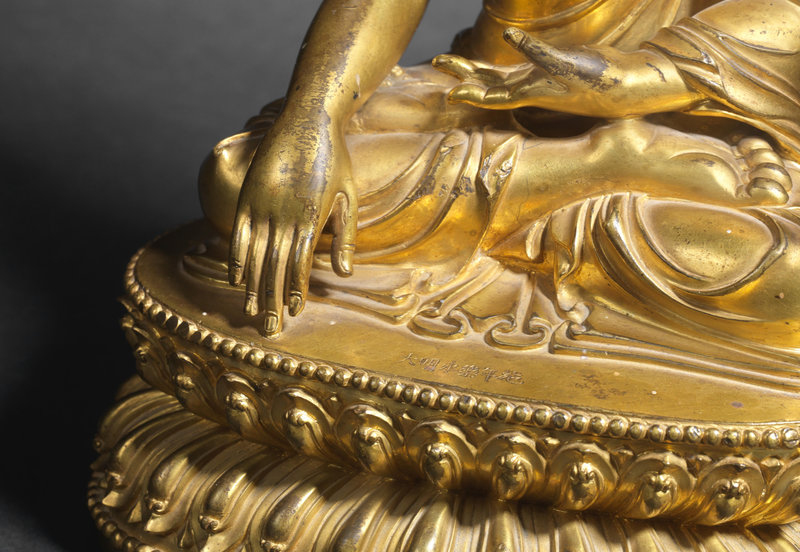
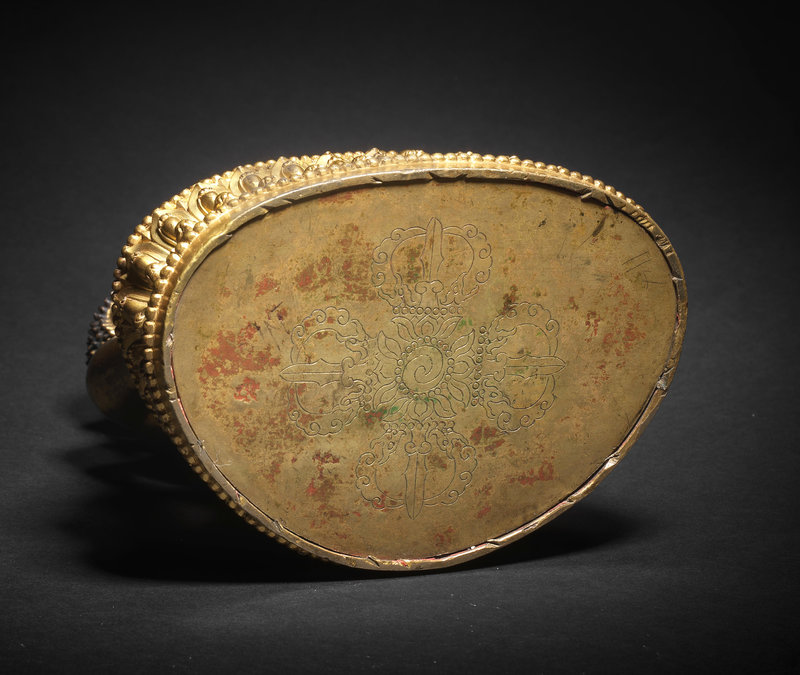











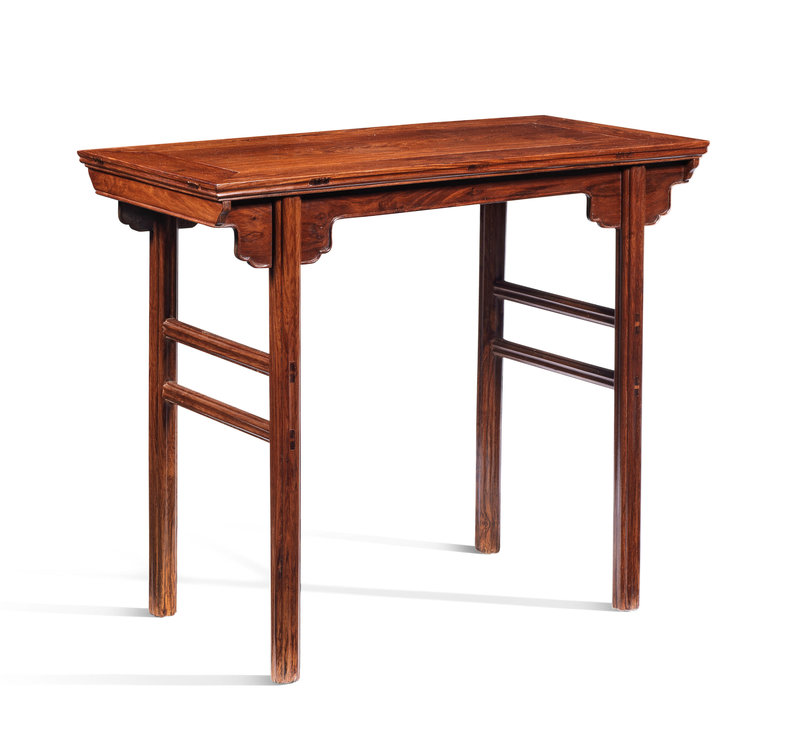


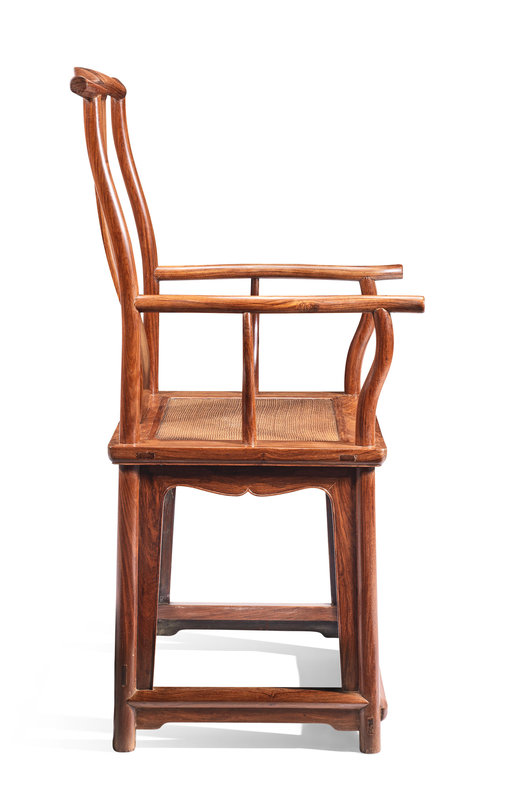
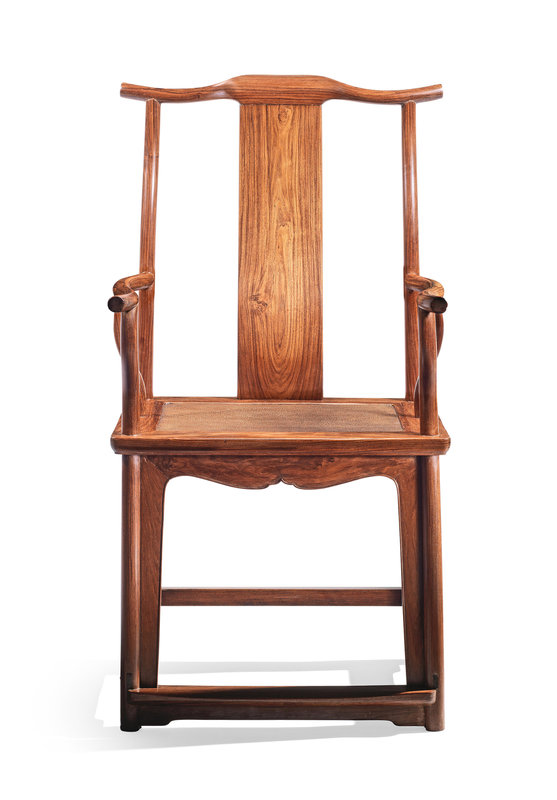



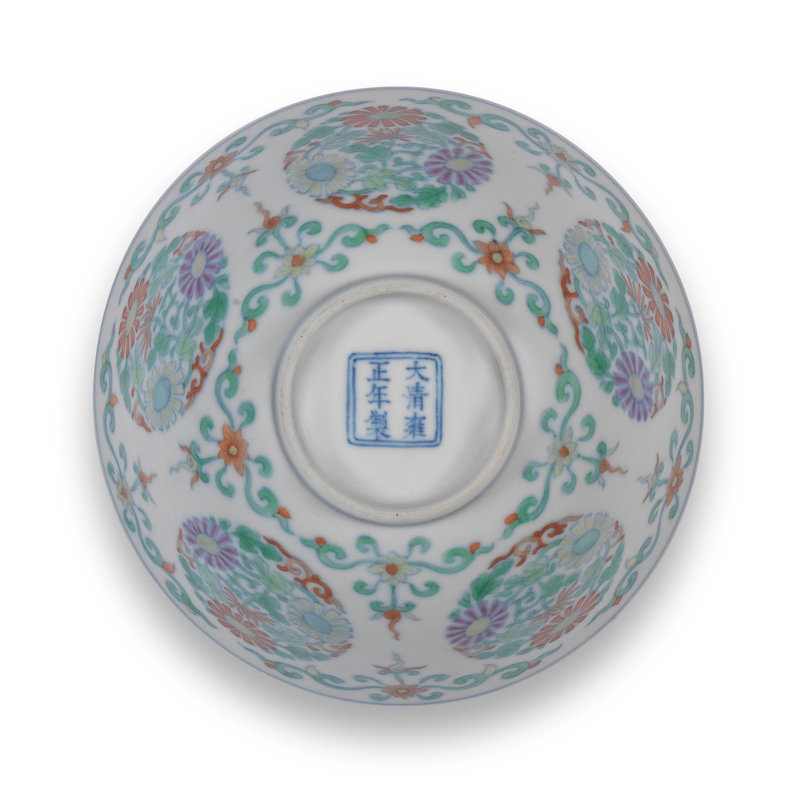

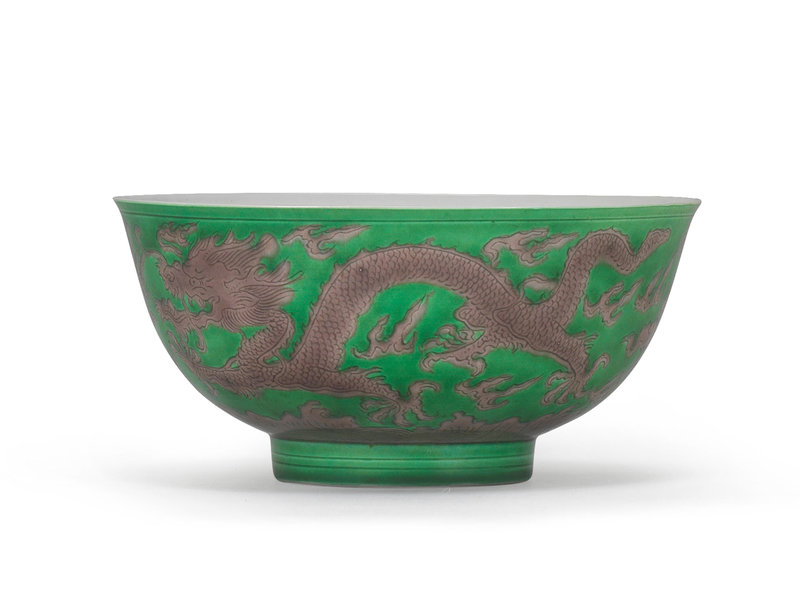








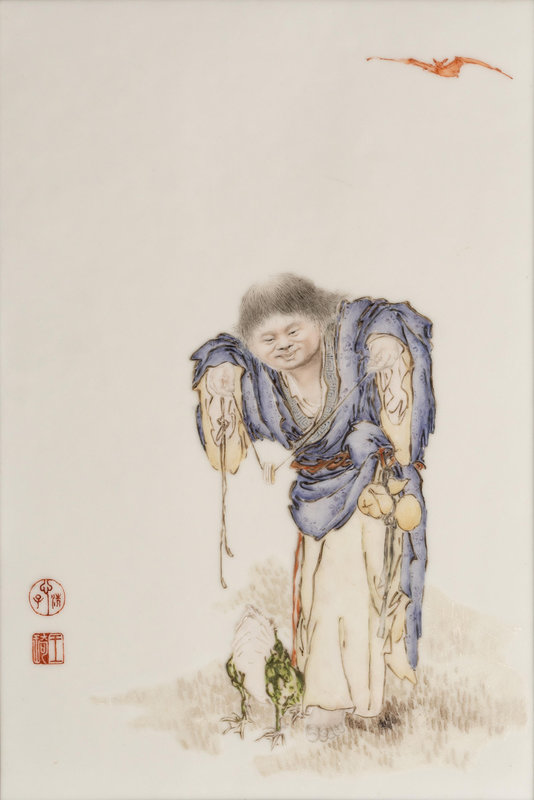




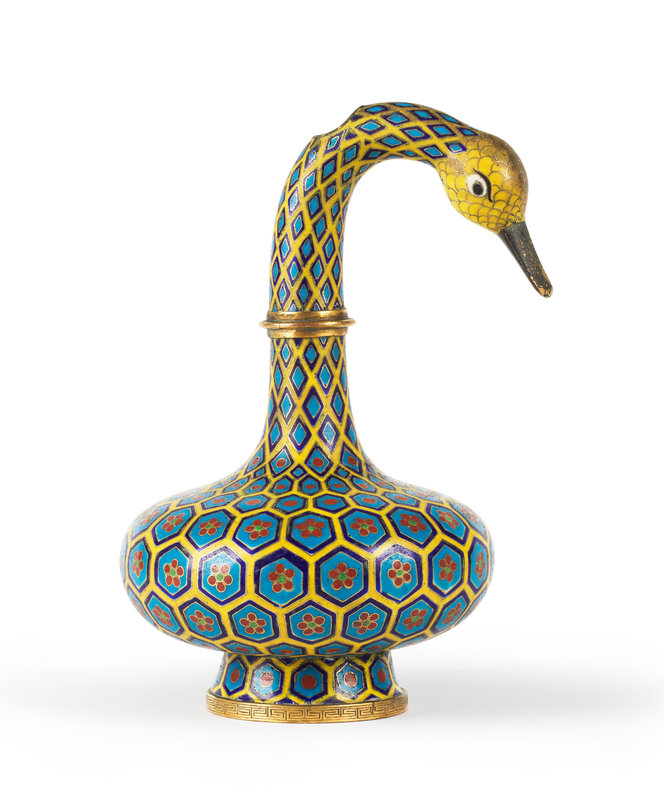







/image%2F1371349%2F20240303%2Fob_3525eb_801-1.jpg)
/http%3A%2F%2Fstorage.canalblog.com%2F45%2F10%2F119589%2F129777700_o.jpg)
/http%3A%2F%2Fstorage.canalblog.com%2F45%2F89%2F119589%2F129766046_o.jpg)
/http%3A%2F%2Fstorage.canalblog.com%2F52%2F01%2F119589%2F129765624_o.jpg)